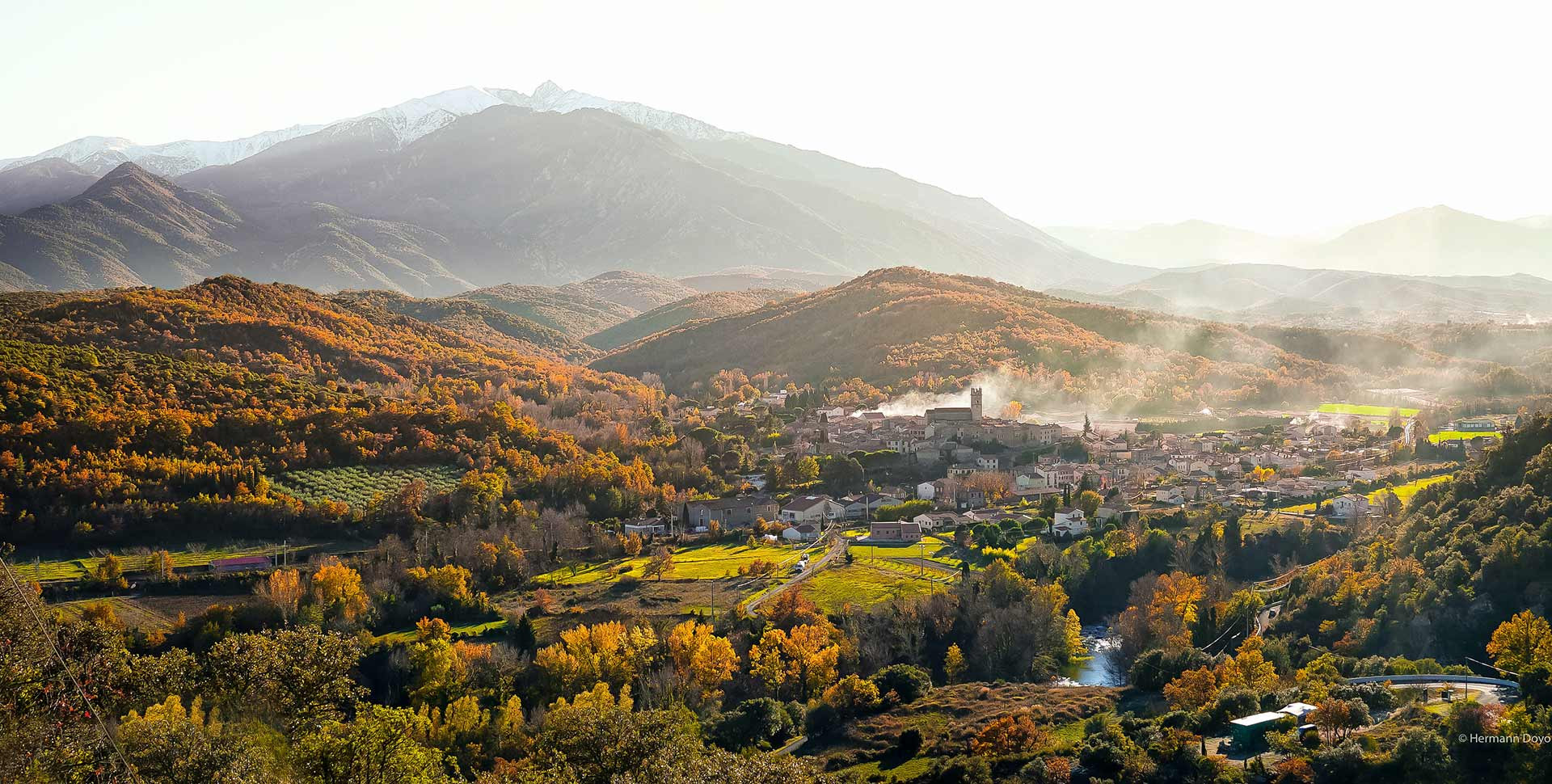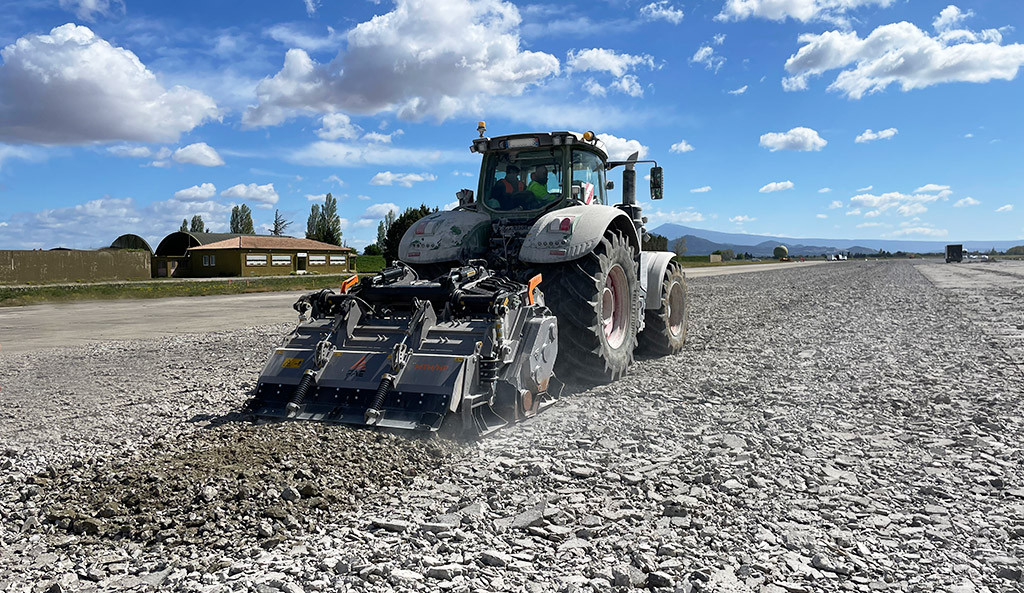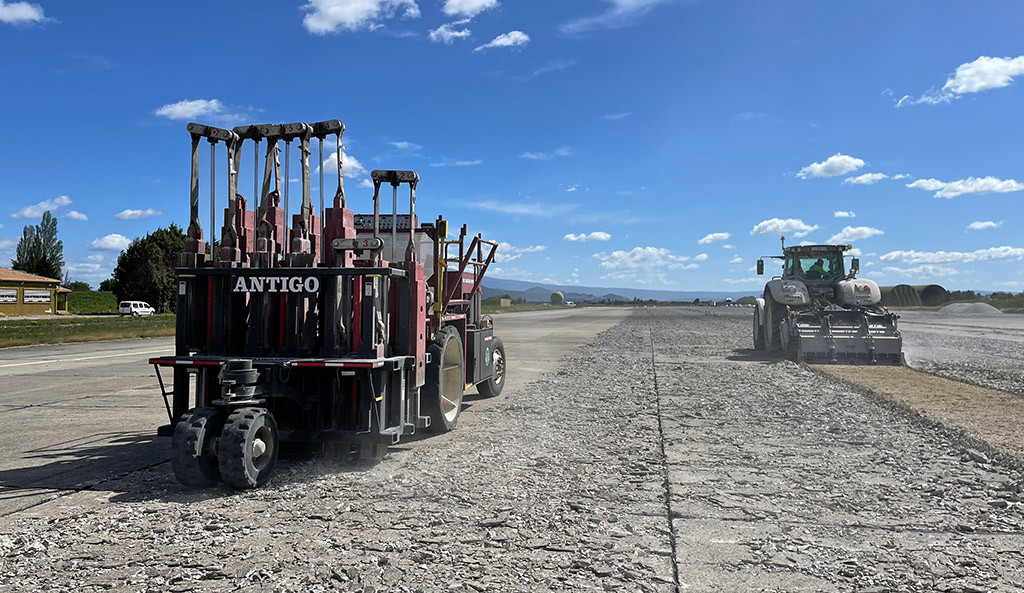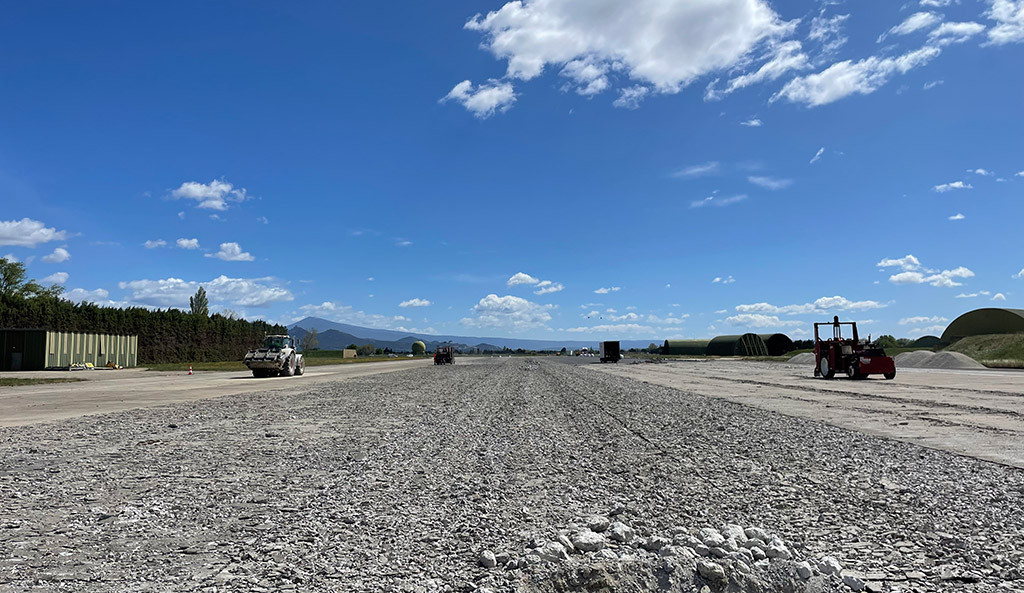
This story began when S.L.T.P., based in Gaillac in the South of France and specializing in public works, received an invitation to participate in a very interesting project: the resurfacing of the take-off and landing runways of a military airport not far from its headquarters.
S.L.T.P. contacted Cadauma, an FAE dealer in France, to try the FAE MTH/HP 225 multitask. Previously used machines had not been up to the task, but the MTH proved its worth right from the start. It started working at the Orange 115 Military Air Base construction site, crushing concrete slabs and stabilizing the soil to restore the military airplane runways and parking areas.

Demolishing the runways and taxiways at the military airport
Pre-cracking the concrete slab with a special machine imported from the US
Crushing the concrete slabs and reducing them to a 0/80 aggregate (mixed recycled material for road work)
Recovering and storing the 0/80 aggregate on site to reuse later
Mixing 35-cm clay/lime layers
Processing the 35-cm clay/lime layers and going over them again with a 35-cm layer of concrete
Spreading the recycled 0/80 material on the concrete
Spreading the 0/20 GNT layer
Repairing the concrete runway (30 cm thick)
 |
 |
Mr. De Chanterac, owner of S.L.T.P., told us how things went at the construction site.
“In total, the FAE MTH/HP 225, paired with a Fendt 1042 tractor, crushed a 50,000 m² area and stabilized an 80,000 m² area.
First of all, we crushed 27-cm-thick concrete slabs after first using special machines on them and a hydraulic demolition hammer in certain areas, with the aim of producing a 0.8 mm recycled aggregate material. Then, this material was stored on site to reuse later, which significantly reduced the site's environmental impact relating to carbon emissions.
After removing the concrete aggregate, we began stabilizing the soil with a concrete/lime mixture, and then we compacted it. Then, we spread the 0/80 aggregate produced with the old concrete slab on the ground. The different layers were compacted once again, and then we moved on to the final stage by spreading the concrete layer that formed the new runways.
The working depth was 35 cm, and the operating speed was 0.3 km/h, with an average fuel consumption of 65 l/h. We processed 27-cm-thick concrete slabs with a 0.80 mm output granulometry, as requested by the client.
The process included crushing a large surface divided into lines equal to the rotor width. The work was performed in parallel lines. At the end of the “runway,” the driver would leave a 1.8-m-wide strip of processed soil and then continue with the rotor completely lowered to resume working on the next strip.
The counter blades were adjusted to ensure a 0.8 mm granulometry,” concluded De Chanterac.
Apart from crushing the concrete, the machine was highly appreciated for the quality of the mixture. The MTH/HP 225 mixed the material in a truly effective way, with a very fine granulometry output.
Share your story with us! Contact: [email protected]